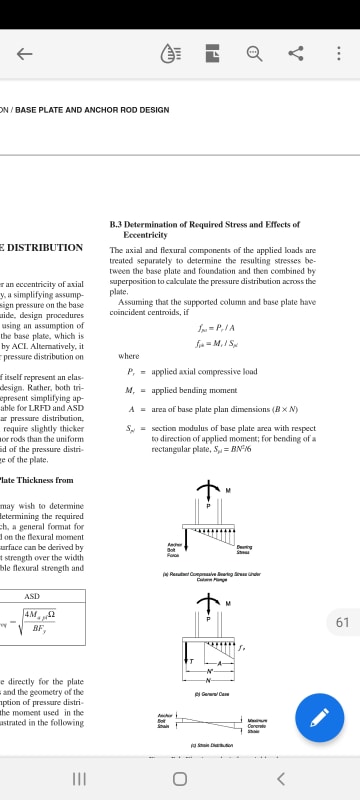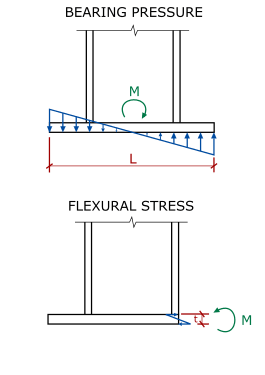SALTRAM4567777
Structural
- Aug 11, 2020
- 90
As we are aware of this equation being used to calculate maximum and minimum bearing pressure.
F=P/A +- 6M/bl2
When designing base plates for large eccentricity we use this equation where b is the width of base plate and l is the length of base plate. Similarly when we compute the base plate thickness we substitute t (thickness of base plate) instead of l (length of base plate).
F=6M/bt2
My question is how for the same moment we are calculating section modulus taking t as well as l.
 ²
²
F=P/A +- 6M/bl2
When designing base plates for large eccentricity we use this equation where b is the width of base plate and l is the length of base plate. Similarly when we compute the base plate thickness we substitute t (thickness of base plate) instead of l (length of base plate).
F=6M/bt2
My question is how for the same moment we are calculating section modulus taking t as well as l.


